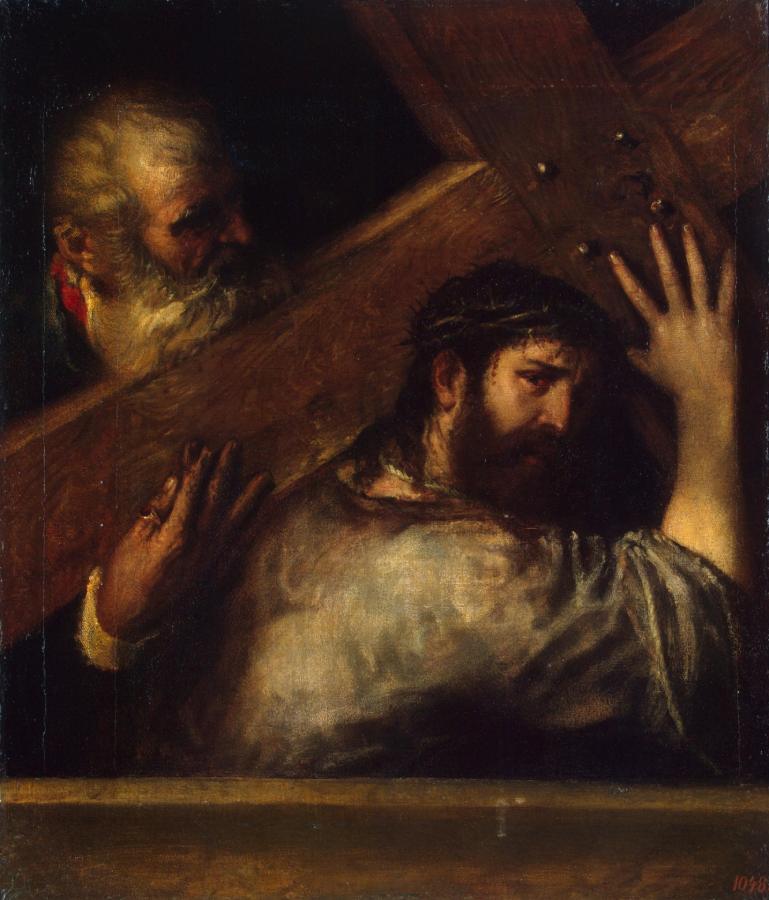Tiziano (c.1488-1576)
Gesù che porta la croce (Carrying of the Cross)
1560s
Oil on canvas, 89 x 77 cm
Hermitage Museum, Saint Petersburg
Beginning in the 1530s Renaissance culture entered a period of decline in Italy. Venice remained the last bastion of Humanist ideas, but in its art too signs of a deep crisis gradually increased. Images of a harmoniously serene existence gave way to depictions of suffering and dying personages. In Christ Carrying the Cross Titian brought right up to the viewer Jesus’ pale exhausted face with its eyes covered by a bloody veil, forcing us to experience all the tragedy of his final journey. Yet his Christ is not broken: he makes his ascent to Calvary with a clear understanding of what is taking place. The deliberately fragmented composition of the painting is exceptionally expressive with the powerful diagonal of the cross giving a sense of forward motion. This sort of composition was an innovation introduced by Titian, one which other artists eagerly adopted in the next stage of the evolution of art. The picture also includes Simon of Cyrene, who helped Christ to carry the Cross. It seems as if the old man’s head emerging from the gloom and Christ’s olive and smoky coloured clothing across which dull patches of light play were painted all in one go. The colour here is so complex that it is almost impossible to find an exact description for it in words. (SHM)
Compare:
 Tiziano (c.1488-1576)
Tiziano (c.1488-1576)
Gesù che porta la croce
c.1565
Museo del Prado, Madrid
